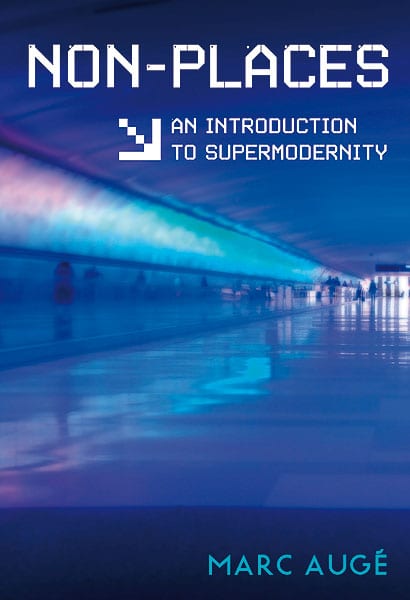|
|
||
|
Marc Augé’s study of hotels, malls and airports, now in a new edition, has become more relevant in a world of growing inequality, says Owen Hatherley. “Non-place” is now a common term that denotes the seamless, sterilised, transient, privatised spaces of the late 20th and early 21st century. The term is often used to describe airports, shopping malls, hotels and business districts, such as Canary Wharf, Heathrow, La Défense – in the case of Dubai you could argue an entire metropolis is a non-place. The prevalence of the term suggests that Marc Augé’s 1992 book Non-Places: Introduction to an Anthropology of Supermodernity has been deeply prescient, given the unstoppable expansion of the non-place – the preface even namechecked Dubai, a decade before its worldwide notoriety. So there’s an air of vindication to the present edition, with a trenchant new introduction from the author. However, the original book is not quite the sustained, detailed discussion of non-place one might expect. Although the current edition drops the word “anthropology” from the title, Augé, whose previous books were about the rural areas of West Africa, spends much time explaining his use of anthropological methods. This is of mainly scholarly interest, and is not wildly different in approach from the Mass Observation in the 1930s, which investigated the working class in Britain with an estranged anthropological rigour. Rather, what explains the book’s continued pertinence is the isolation of the non-place, the extracting of an idea already highly developed in the work of JG Ballard or Jean Baudrillard (neither of whom are cited) and subjecting it to rigorous anthropological analysis. Non-Places is, especially for such a short book (100 pages in this edition), a strange and compelling hybrid. The preface is an exemplary narrative of non-place, told through a character’s traversal of and interaction with adverts, hotels, cash machines, airport kiosks and planes. The bulk of the book explores “supermodernity” against a “modernity” defined by Baudelaire’s seedy, teeming, revolutionary Paris. As an introduction to the discipline developed in his later books, such as In the Metro, the book is suggestive more than direct, aphoristic rather than concrete. The measured tone is interestingly at odds with the dark, critical perspective of the new introduction. Already in 1992, Augé makes clear that there are non-places of the poor as much as the rich, with transient shanty towns or refugee camps being the necessary corollary of the financial districts and luxury hotels. There are non-people as much as non-places. Francis Fukuyama’s End of History thesis of an achieved capitalist and democratic perfection was still taken seriously 17 years ago, but the Augé of 2009 lays great stress on inequality, a combined and uneven development which has exponentially expanded the non-place, whether the favela or the departure lounge. Architects, especially of the superstar variety, are for Augé prime creators of non-places. Today, he argues, their only “ways out” are either a return to serious, social projects, or taking the utopian facade of the non-place literally, creating genuinely transparent, communal places. But regardless of his ideas for practical solutions, what is most impressive in Non-Places is a dispassionate negativity.
Non-Places: Introduction to Supermodernity, by Mark Augé, Verso, £10.99 |
Words Owen Hatherley |
|
|
||




















